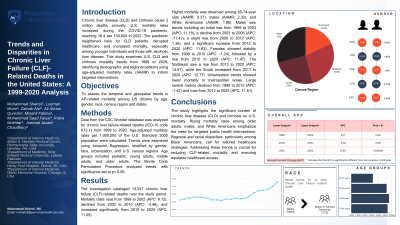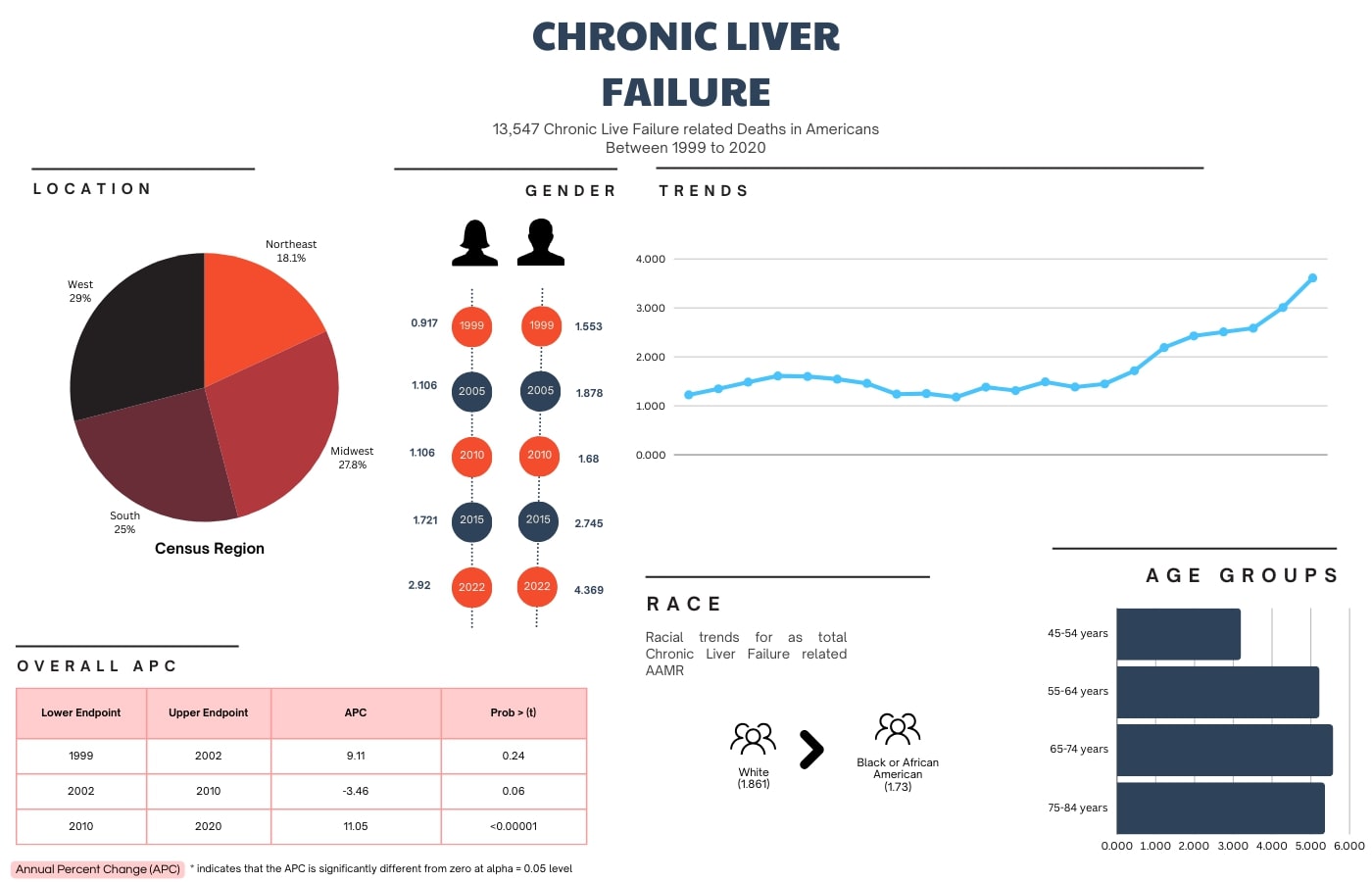Monday Poster Session
Category: Liver
P2971 - Trends and Disparities in Chronic Liver Failure (CLF)-Related Deaths in the United States: A 1999-2020 Analysis
Monday, October 28, 2024
10:30 AM - 4:00 PM ET
Location: Exhibit Hall E

Has Audio

Muhammad Shahzil, MD
Penn State Health Milton S. Hershey Medical Center
Hershey, PA
Presenting Author(s)
Muhammad Shahzil, MD1, Luqman Munir, 2, Zainab Alvi, MBBS2, Ali Akram Qureshi, 2, Minahil Fatima, 2, Muhammad Saad Faisal, MD3, Rabia Mukhtar, MD4, Ammad Javaid Chaudhry, MD3
1Penn State Health Milton S. Hershey Medical Center, Hershey, PA; 2King Edward Medical University, Lahore, Punjab, Pakistan; 3Henry Ford Health, Detroit, MI; 4Weiss Memorial Hospital, Chicago, IL
Introduction:
Methods:
Results:
Discussion:

Disclosures:
Muhammad Shahzil, MD1, Luqman Munir, 2, Zainab Alvi, MBBS2, Ali Akram Qureshi, 2, Minahil Fatima, 2, Muhammad Saad Faisal, MD3, Rabia Mukhtar, MD4, Ammad Javaid Chaudhry, MD3. P2971 - Trends and Disparities in Chronic Liver Failure (CLF)-Related Deaths in the United States: A 1999-2020 Analysis, ACG 2024 Annual Scientific Meeting Abstracts. Philadelphia, PA: American College of Gastroenterology.
1Penn State Health Milton S. Hershey Medical Center, Hershey, PA; 2King Edward Medical University, Lahore, Punjab, Pakistan; 3Henry Ford Health, Detroit, MI; 4Weiss Memorial Hospital, Chicago, IL
Introduction:
Methods:
Results:
Discussion:

Figure: Trends and Disparities in Chronic Liver Failure (CLF)-Related Deaths in the United States: A 1999-2020 Analysis
Disclosures:
Muhammad Shahzil indicated no relevant financial relationships.
Luqman Munir indicated no relevant financial relationships.
Zainab Alvi indicated no relevant financial relationships.
Ali Akram Qureshi indicated no relevant financial relationships.
Minahil Fatima indicated no relevant financial relationships.
Muhammad Saad Faisal indicated no relevant financial relationships.
Rabia Mukhtar indicated no relevant financial relationships.
Ammad Javaid Chaudhry indicated no relevant financial relationships.
Muhammad Shahzil, MD1, Luqman Munir, 2, Zainab Alvi, MBBS2, Ali Akram Qureshi, 2, Minahil Fatima, 2, Muhammad Saad Faisal, MD3, Rabia Mukhtar, MD4, Ammad Javaid Chaudhry, MD3. P2971 - Trends and Disparities in Chronic Liver Failure (CLF)-Related Deaths in the United States: A 1999-2020 Analysis, ACG 2024 Annual Scientific Meeting Abstracts. Philadelphia, PA: American College of Gastroenterology.
